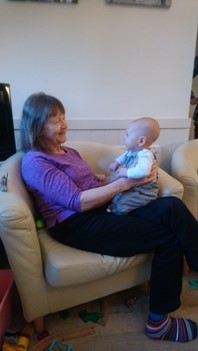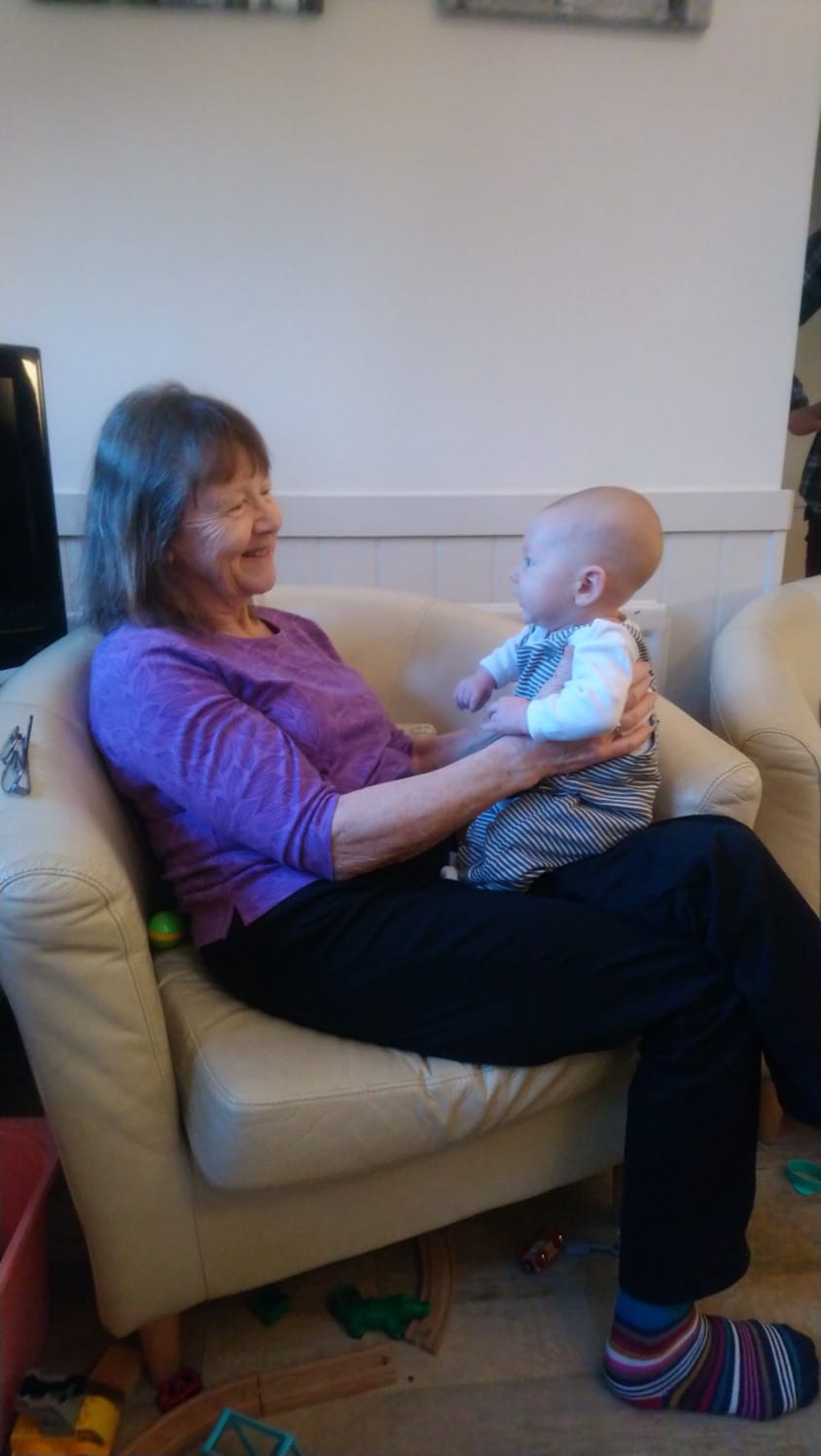What are Plagiocephaly and Brachiocephaly?
Do you know anyone whose baby has Flathead Syndrome?
As a mother of four, grandmother of five, and an antenatal teacher who meets hundreds of first time parents and their babies every year, this is something I have been interested in ever since the early 1990s. Before that, I had never heard any of the above terms, nor been aware of this issue.
After the Back to Sleep campaign, I quickly began to notice babies with flat or oblique head moulding, and parents started to contact me to ask about this. If anyone would like to see images of babies with head moulding there are plenty on the Internet – just search for plagiocephaly images.
A little bit of History
When I had my first baby in 1975, my mother and grandmother impressed on me very strongly that I MUST lie my baby on her side, and change sides regularly, in order to preserve her beautiful rounded head shape.
Babies at that time were put into bed on their sides with their lower arm well forward to stop them rolling onto their tummies and sometimes with a rolled up towel behind them, they often had cot and pram pillows which were fairly flat but just raised the head a little.
When I had my subsequent three babies in the 1980s many parents were now lying their babies on their tummies; but I kept mine on their sides. Lying a baby on his or her back was still considered potentially risky for babies being sick and choking. Babies were also propped up in the pram, or on the floor, on cushions and pillows, from quite a young age during the day so they could look around; most also had regular “tummy time”.
Where are we now – in 2021?
SIDS research tells us that fewer babies die when slept on their backs*. This seems to have resulted in parents believing that babies under 6 months need to be lying on their backs most of the time. Many babies don’t enjoy this much so the parents buy expensive pillows and nests and pods to try to help their babies sleep – and then worry that they shouldn’t use them. They have white noise, and musical sheep and other props and techniques to try to settle their babies. Nobody gets much sleep! Find more information about how to reduce the risk of SIDS here.
Babies are also expected to spend long periods of time lying or sitting on their backs in cots, in car seats and in recliner chairs when awake They rest their heads on the same spot – perhaps their neck is a little stiff – their head becomes flattened in one area – they develop a preference for the flat spot - their head flattens more, and so – plagiocephaly. This generally happens in the first few months.
Some babies refuse to cooperate and spend lots of time being held by their parents, being held and carried in their arms and in slings, and they tend not to develop flathead syndrome, perhaps there are advantages to being a demanding “velcro” baby?!
Is head moulding a problem?
Well – that depends on your point of view. The first Back to Sleep babies are now adults, and some of them are unhappy about their head and facial a-symmetry. Some have problems with fitting of helmets and glasses. There are support groups for young adults who find their appearance upsetting.
The general advice from midwives, health visitors and doctors is that the baby’s head will “round out” on its own as the baby grows and becomes more mobile. This is true in some cases, especially if the parents take positive action to re-position their baby off the flat spot between 3-6 months of age. In mild cases it may not even be noticeable once the hair grows.
However not all cases will resolve on their own; especially the more severe. If your baby still has very misshapen head at 6+ months it may be too late to do anything apart from investing over £2000 and several months of treatment with a cranial re-moulding helmet.
Some don’t like this idea or can’t afford it. It seems a shame to put parents and babies through that if there is a simple preventative answer.
Why is there not more education on this issue?
Let’s go back to earlier in this blog – I believe it is because of the sleep position advice. Nobody dares suggest babies sleep in any other position than on their backs. Suggesting a softer sleep surface is also discouraged; parents end up with babies sleeping on their chest, or in bed with them, and this is fine if done safely; however parents worry about it. Please find more information about the Baby Sleep Info Source here. Babies who spend less time on their backs and in seats develop stronger back and neck muscles, which arguably makes them safer in any sleep position. Tummy time can start on a parent’s chest and progress to the floor later.
The risk of SIDS in a healthy, full term baby living in a smoke free home, especially if breastfed, is very low indeed. Yet thousands of these babies – and their parents - are denied sleep in the early weeks because they are expected to sleep in a position that is not comfortable for them. If they are happy to sleep on their backs, and spend lots of time in “containers” in the day they may develop plagiocephaly and some have delayed motor skills such as tummy play and crawling.
What now?
I don’t have a solution to all of this – just like the health professionals, I have my hands tied in terms of deviating from current sleep advice on a population level; but I have consistently tried to raise awareness of the issues by writing about them in parenting and midwifery journals. In antenatal classes I get parents to consider the history of infant sleep, and the evidence, then to relate the facts to their own individual situation, in order that they can make their own informed decisions.
 --------------------
--------------------
 About the Author
About the Author
Ann Roberts is an Antenatal practitioner for About Birth & Babies and NCT Antenatal Practitioner for the National Childbirth Trust.
--------------------
More Info on this topic
*Was Back to Sleep the only thing that brought SIDS rates down? Possibly not, there was also a drive in the 1980s and 1990s to reduce smoking in pregnancy and around babies (the biggest risk factor for SIDS); to push up the breastfeeding rates (protective for SIDS), and to address bedding and environment generally. SIDS rates were falling in the 1980s, and continued to fall afterwards. The other change at this time was in the classification of true “unexplained” SIDs, and accidental death due to “hazardous” sleep environments.
The epidemiology of SIDS way back in 1994.
**A note about stiff neck or torticollis. Some babies have a bit of a stiff neck from their position in the womb, or develop one because they have a preference for lying with their head turned one way only (tonic neck reflex). Parents can be alerted to look out for this and do some gentle stretching exercises and play to ensure the baby is able to turn his or her head both ways. All about plagiocephaly and helmets – also information about the far less common, and more serious condition called craniosynostosis visit this website.
For more discussion on sleep position have a look at Sarah Ockwell-Smith’s book “Why Your Baby’s Sleep Matters”pp 94-96
For the academics among us - Nils Bergman discussion of why back sleeping acts as a “stressor” for most babies, visit this website.
Disclaimer: The content of this article has been prepared and written by the author, who does not work for Toddle About. The facts and opinions expressed in this article are not endorsed by Toddle About and do not constitute medical advice.